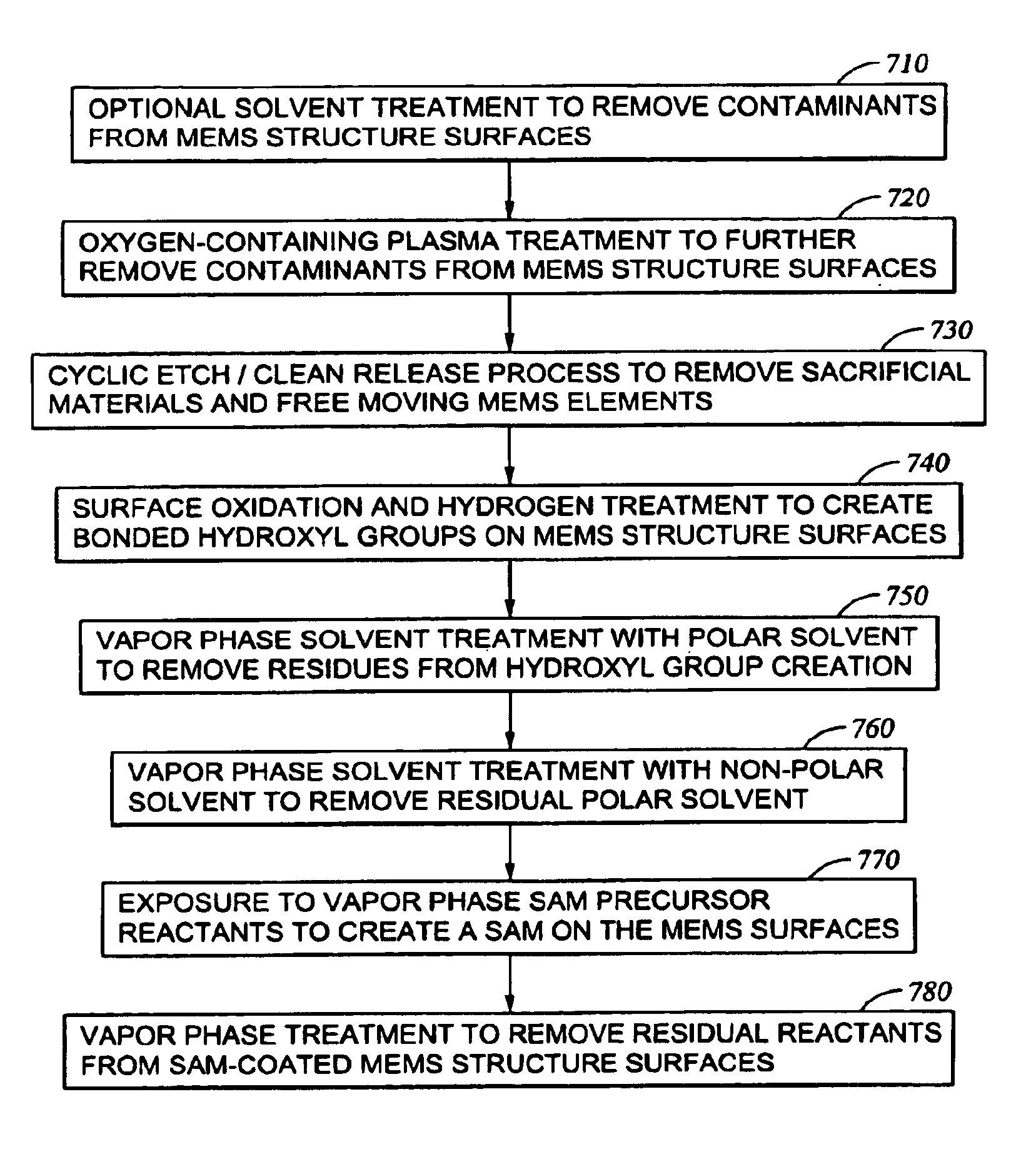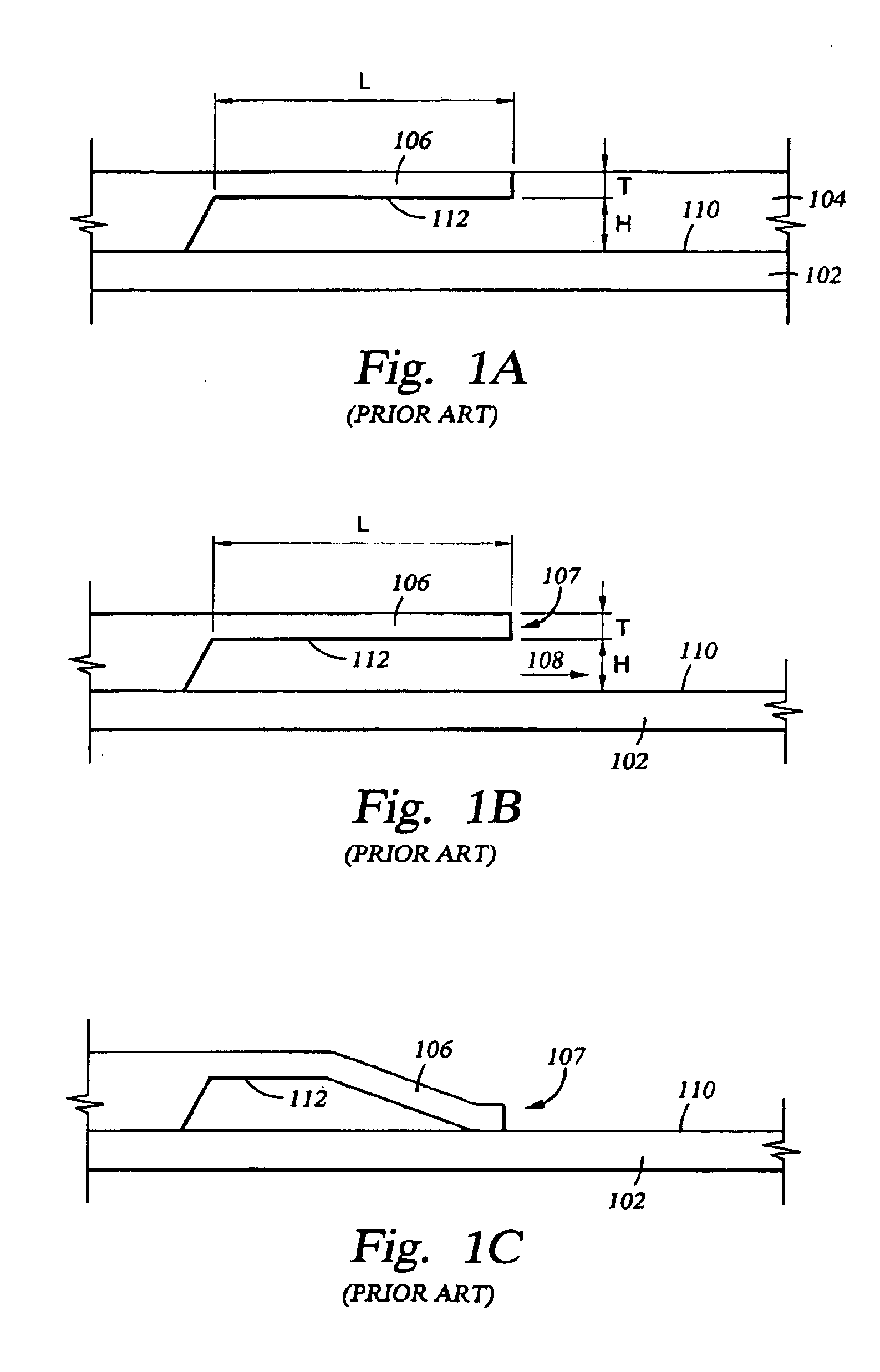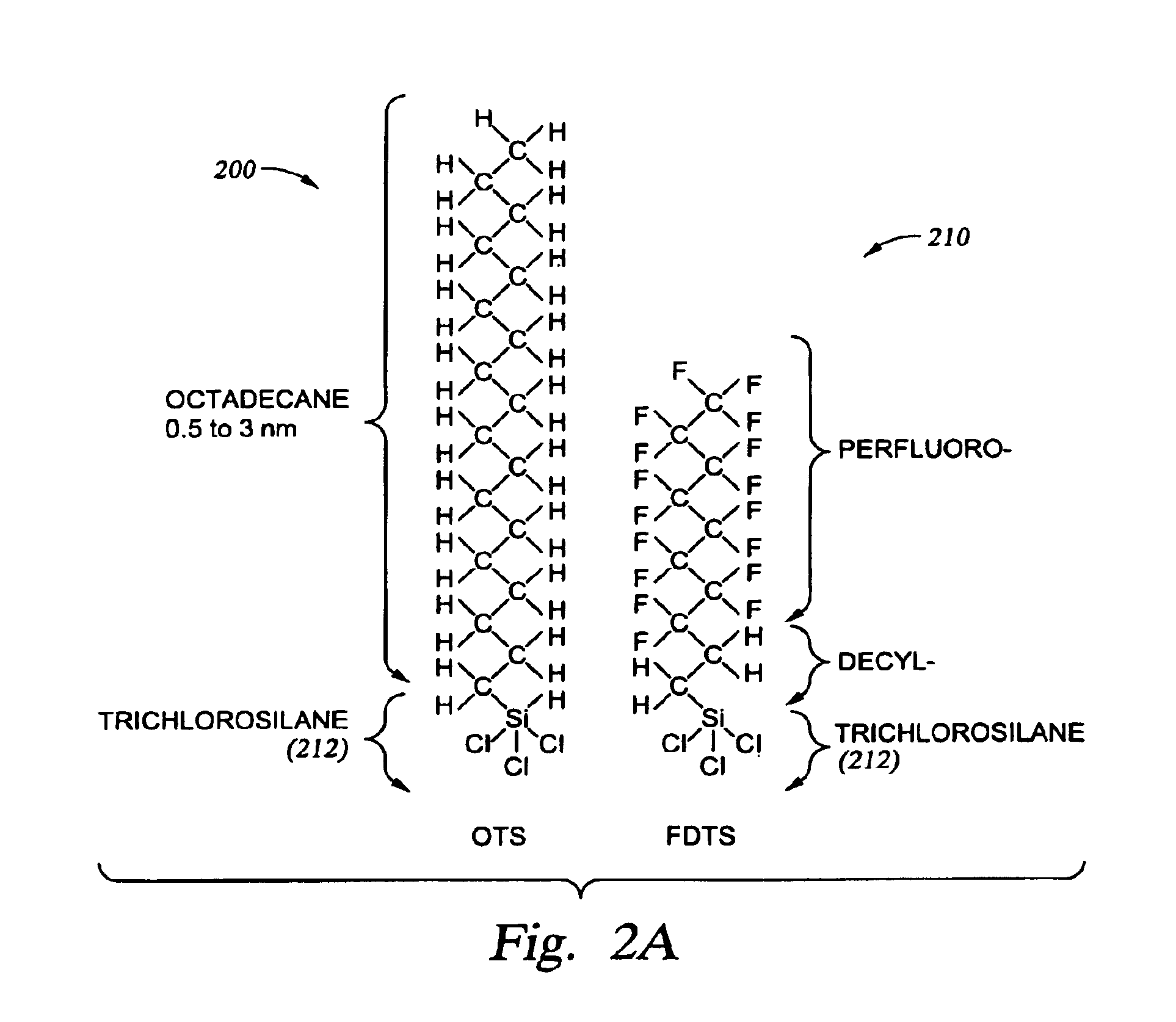Integrated method for release and passivation of MEMS structures
a technology of mems and passivation, applied in the direction of microstructural devices, microstructures, coatings, etc., can solve the problems of stiction being the number one yield-limiting problem, low yield in the fabrication of mems devices, and deformation of the membrane or diaphragm from its intended position, so as to speed up the rate of oxidation and prevent undesirable etching
- Summary
- Abstract
- Description
- Claims
- Application Information
AI Technical Summary
Benefits of technology
Problems solved by technology
Method used
Image
Examples
Embodiment Construction
[0036]Disclosed herein is an integrated process for release and passivation of MEMS structures which includes formation of a SAM on MEMS surfaces. Exemplary processing conditions for performing various embodiments of the method of the invention are set forth below. In addition, various kinds of processing apparatus which may be used to carry out the method are described along with efficiencies which may be achieved by the use of particular processing apparatus.
[0037]As a preface to the detailed description, it should be noted that, as used in this specification and the appended claims, the singular forms “a”, “an”, and “the” include plural referents, unless the context clearly dictates otherwise.
[0038]I. Apparatus for Practicing the Invention
[0039]FIG. 3 shows across-sectional schematic of a single chamber plasma processing system of the kind which was used to carry out the experimentation described herein, in order to minimize initial equipment costs. A single chamber processing sy...
PUM
| Property | Measurement | Unit |
|---|---|---|
| volume % | aaaaa | aaaaa |
| volume % | aaaaa | aaaaa |
| pressure | aaaaa | aaaaa |
Abstract
Description
Claims
Application Information
 Login to View More
Login to View More - R&D
- Intellectual Property
- Life Sciences
- Materials
- Tech Scout
- Unparalleled Data Quality
- Higher Quality Content
- 60% Fewer Hallucinations
Browse by: Latest US Patents, China's latest patents, Technical Efficacy Thesaurus, Application Domain, Technology Topic, Popular Technical Reports.
© 2025 PatSnap. All rights reserved.Legal|Privacy policy|Modern Slavery Act Transparency Statement|Sitemap|About US| Contact US: help@patsnap.com



